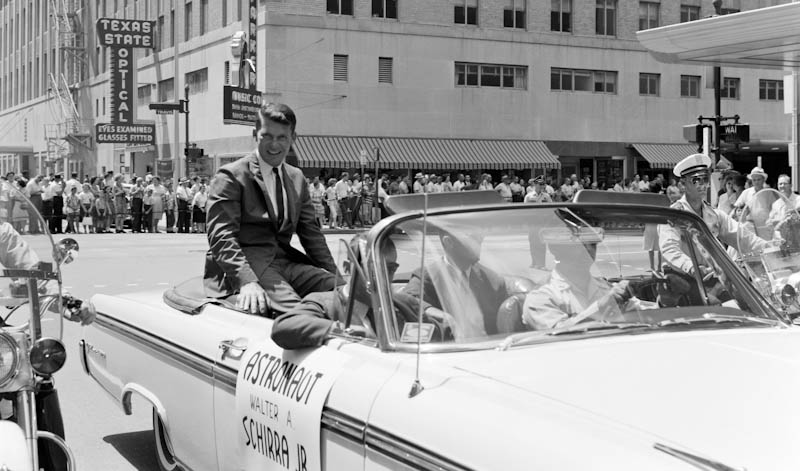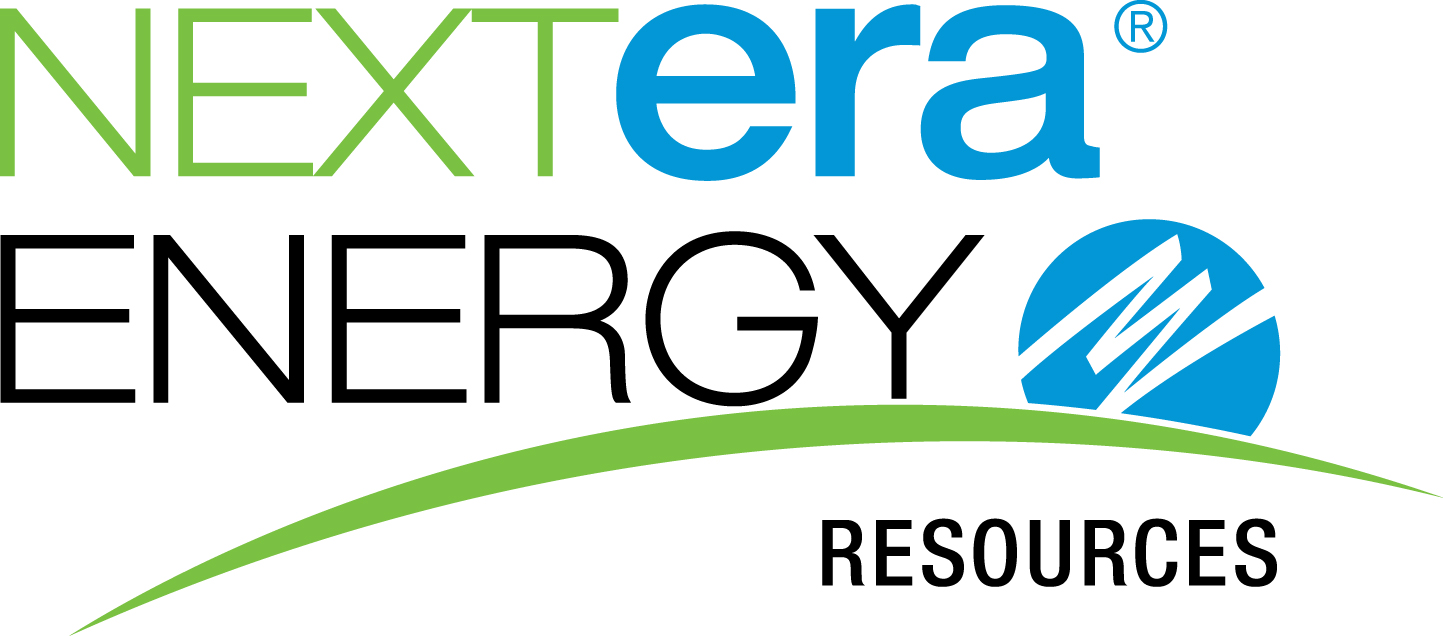When NASA and its Astronauts Arrived in Houston
Published Jul 18, 2019 by Josh Pherigo
'We are glad you came'
On the day the astronauts first arrived in Houston, the city was ready with a Texas-sized welcome.
It was the Fourth of July 1962 – over a year since President Kennedy first set America’s sights on the moon and ten months since NASA chose Houston for the space center that would make it happen. In open-top convertibles, under a scorching Houston sun, the Mercury Seven and their families paraded through downtown along a route crowded with some half-a-million of their new neighbors. It was the first parade in Houston’s history without any horses in it, a TV announcer noted. Though, there was a spaceship. Riding on a trailer, the conical grey capsule had a poster taped to its side: “Mercury Spacecraft.”
At the Sam Houston Coliseum – then, the downtown home of the Houston rodeo – the astronauts were ushered on stage for a welcome ceremony with the mayor and other local officials. The Master of Ceremonies that day was George T. Morse, chief executive of Peden Iron and Steele and President of the Houston Chamber of Commerce (predecessor to the Greater Houston Partnership). The Chamber had organized the day’s festivities – from picking the barbecue caterer to covering the $15,000 parade costs. If Houston was glad to see its new astronauts, no group was more keenly aware of the economic boom they would bring than the Chamber.
Since NASA’s announcement the previous fall, Morse and the other Chamber executives had fully embraced Houston’s transition into Space City: helping to find temporary office space for NASA employees, tracking the flow of new space-related business into the region, and coordinating a deluge of sudden media interest in Houston. The Chamber communicated regularly with NASA officials during the transition, and in turn, NASA higher-ups occasionally used Chamber events to issue public announcements. It was at the Chamber’s annual meeting in December 1961 that a senior NASA official first unveiled the Gemini program, the critical precursor to the Apollo missions.
Because of those close ties, it naturally fell to the Chamber to roll out the welcome mat for the astronauts. Chamber President Morse had taken such a personal interest in the arrival of the Mercury Seven that he initially offered to host the welcome luncheon at his house. The coliseum, it was decided, would be more appropriate.
After a rendition of “The Eyes of Texas” by the Bellaire High School band, Morse took to the podium. The air-conditioned coliseum held a crowd of 7,500 people that day, all waiting for a barbecue lunch. Thirty buffet lines ringed the auditorium.
“We are honored that our nation’s manned explorations into outer space will be directed from your headquarters here in Houston,” Morse said, turning to the astronauts. “Needless to say, we are glad you came.”
In quick succession, locals bestowed gifts on the seven. First, the Chamber President Morse passed out “cowboy-style” hats to each man, followed by Mayor Lewis Curtrer who issued each a key to the city. Finally, calling them to the podium one-by-one, Harris County Sherriff Buster Kern pinned shiny gold badges to each astronaut’s chest, “deputizing” them into the Harris County Sherriff’s posse. After getting his badge, John Glenn seized the mic.
“We were exhorted to look, act and talk the part.” Glenn said. “We now look the part, we’ll follow your lead in acting the part, and ‘howdy.’”
Welcome to Clear Lake
By the summer of 1962 the Mercury Seven astronauts were among the most famous people on earth, and the U.S. space program was riding a wave of public enthusiasm. After years of disappointment in playing catch-up to the Russians, NASA had completed its first orbital mission in February, and the space program was, finally, gaining needed traction.
Though the opening of the Manned Spacecraft Center was still years away, NASA’s arrival into Houston had already started to transform the city. The seven astronauts on stage that day were the last of 755 NASA employees to relocate to Houston from Langley, Virginia. More came from other parts of the country, and by the summer of 1962 NASA’s Houston workforce included more than 1,500 employees. By 1965, that figure would grow to 4,900 employees and at least 4,800 contract workers. One study estimated NASA’s entrance into Houston added 57,500 people to the region within the first four years.
While NASA’s workforce grew, so did its need for office space. When the first group of NASA employees stepped off the plane in October 1961, they were set up in a single, 3,000 square-foot office at the Gulfgate Shopping Center. By the time the astronauts arrived nine months later, NASA’s Houston footprint had grown to 300,000 square feet of office and lab space in 11 locations spread throughout the region. A hub of operations was established at the Farnsworth and Chambers Building on South Wayside Drive (now home to Houston’s Parks and Recreation Department).
As engineers set about the work of designing a moon mission in their temporary offices, the space center was taking shape in Clear Lake. By July 1962, the soggy cattle pasture had been worked and prepped for construction, though no buildings had yet risen. Over $200 million in facility and infrastructure spending was planned for the 1,600-acre campus. In addition to the local companies vying for those contracts, many out-of-town firms set up Houston locations to seek NASA work. Nationally, the Apollo program would eventually employ 20,000 contract companies all 50 states. As many as 60 firms had either relocated to Houston or announced expansion plans by mid-1962.
To house all the new residents, entire communities were springing up on the once treeless coastal plains surrounding Clear Lake. The area saw its population explode from 6,500 in 1960 to more than 30,000 by 1965. New subdivisions with names like “Timber Cove” and “El Lago” would become known for their famous residents. John Glenn and his wife, Annie, moved into a house on Sleepy Hollow Court. Gus Grissom and Wally Schirra became next-door neighbors on Pine Shadows.
About the time the Glenns, the Grissoms and the Schirras were packing up in Langley, a civilian test pilot named Neil Armstrong was handing in his application to NASA. He was the last of 253 candidates for the second group of NASA astronauts. In fact, Armstrong missed the deadline by a full week. But he was exactly what NASA had been looking for. At 31, Armstrong was younger than all seven of the Mercury astronauts, though he was already one of the most experienced test pilots in the country. He represented a new generation of astronauts.
If the Mercury missions were about proving that the U.S. could get to space, the Gemini missions would show that we could fly up there. To perform the complex orbital mechanics of space rendezvous and other advanced techniques needed for a moon mission, the new astronauts would need engineering skills equal to their flying ability. For this second group of candidates, NASA beefed up its academic requirements – insisting on science and math degrees of all applicants – and lowered its maximum age limit to 35 with the expectation that some in this new group would pilot the moon missions at the end of the decade. The “new nine” were announced in September 1962. By the end of the fall, the Armstrongs had settled into a comfortable house in El Lago, just a few miles from the office.
Learn more about NASA's history in Houston and see how the city has changed since 1969. Learn about the Houston Spaceport and Houston's presentation on the future of space exploration at the recent Paris Air Show.
 The Houston Report
The Houston Report



















